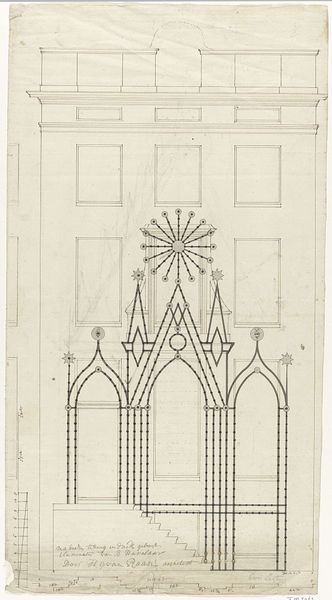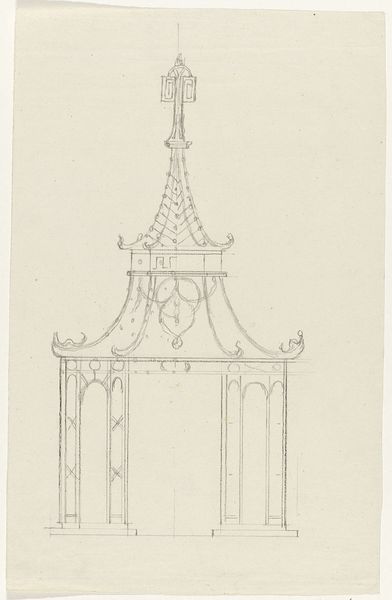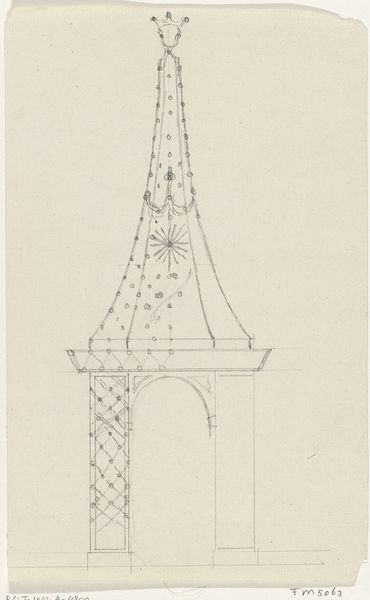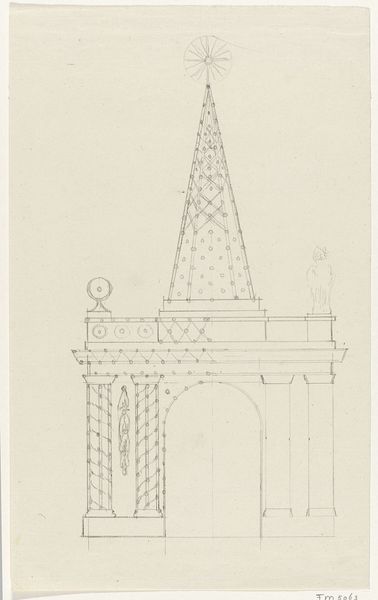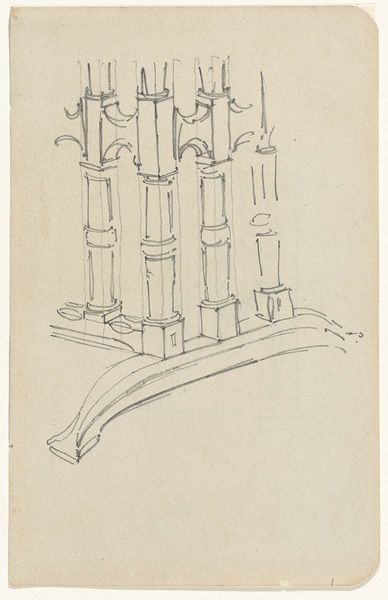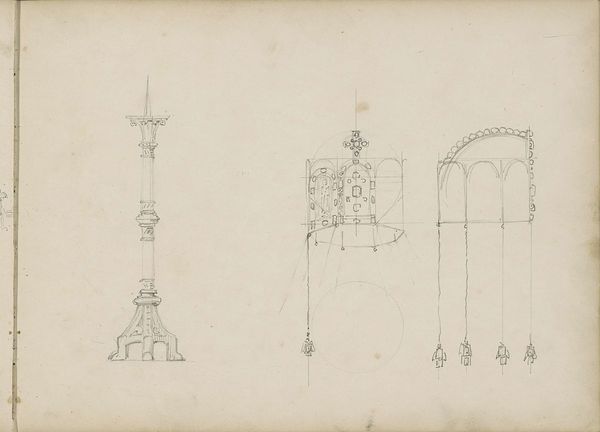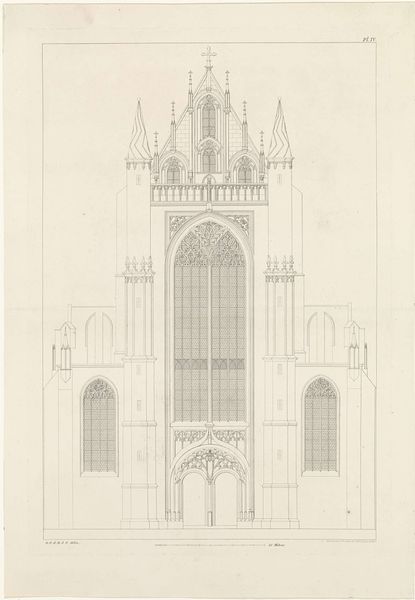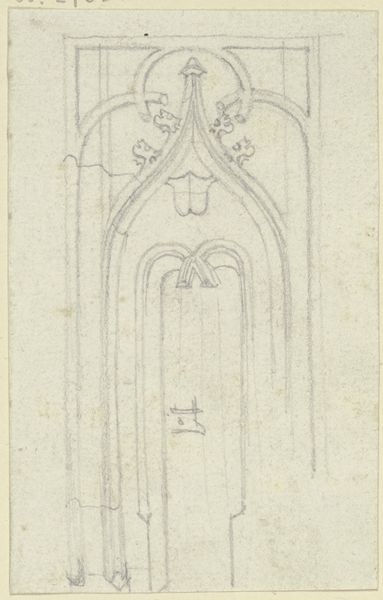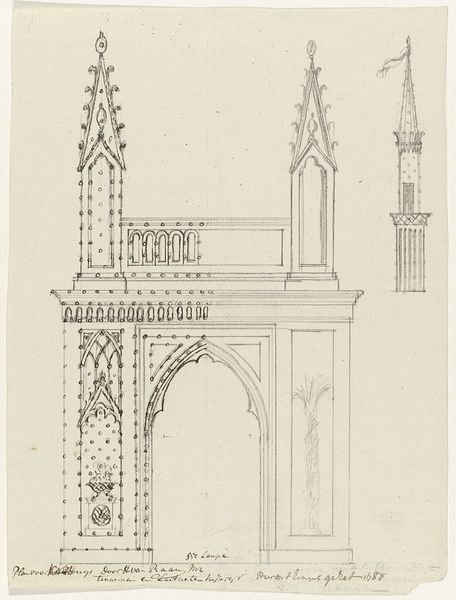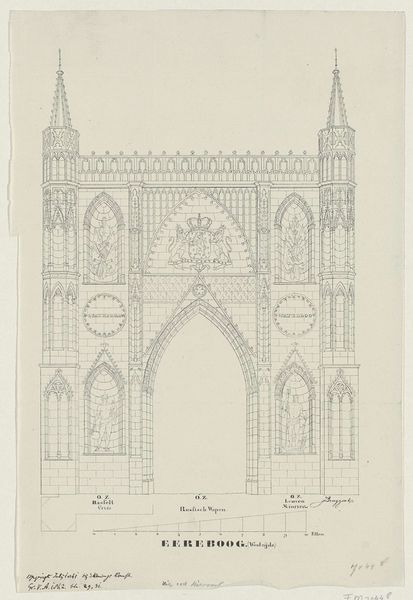
Ontwerp voor illuminatie bij het huis van burgemeester Hasselaer te Amsterdam, 1788 1788
0:00
0:00
drawing, paper, pencil, architecture
#
drawing
#
neoclacissism
#
etching
#
paper
#
geometric
#
pencil
#
cityscape
#
architecture
Dimensions: height 483 mm, width 300 mm
Copyright: Rijks Museum: Open Domain
Curator: Looking at this pencil drawing, entitled "Ontwerp voor illuminatie bij het huis van burgemeester Hasselaer te Amsterdam, 1788," I am immediately struck by its somewhat austere character, especially considering that it is an architectural sketch of lights to celebrate a mayor's house! Editor: Yes, I agree, Hendrik G. van Raan's piece presents itself as very geometrical and somewhat rigid in composition. Given the context of Neoclassicism, its clean lines and calculated symmetry signal an adherence to order and reason over frivolous display, or emotion. The architectural features outlined feel…calculated, rational. Curator: It's interesting you say that. Examining this through a socio-historical lens, one can interpret this design, intended for a civic leader's residence, as broadcasting the values of the Dutch Enlightenment. It’s not just decoration, it’s a public statement! The restraint in the design perhaps conveys the gravity and virtue expected from someone in a position of authority. It suggests something stable. Editor: Precisely. Notice how van Raan employs repeated circular and star motifs—it's not just ornamental. Circles could signify wholeness, completion, perfection...and the stars often representing enlightenment. Curator: True, but it does seem like an odd medium to me – a preliminary sketch on paper using pencil – to choose for something that’s related to illumination. Is this perhaps indicative of a society under some type of stress that couldn't yet deliver grand displays for its leaders? Editor: That is an astute observation. This drawing can give hints to a lot of the economic hardship Amsterdam faced in this period. Perhaps this is as celebratory as the occasion warranted in those conditions. It would suggest something about civic priorities. Curator: Well, after having considered the design and historical implication in some depth, I see more to it now than what first met the eye. A seemingly plain work actually yields considerable social commentary! Editor: Yes, indeed! We've seen here how, by looking past mere surface aesthetics, even something seemingly rigid can become quite eloquent!
Comments
No comments
Be the first to comment and join the conversation on the ultimate creative platform.
